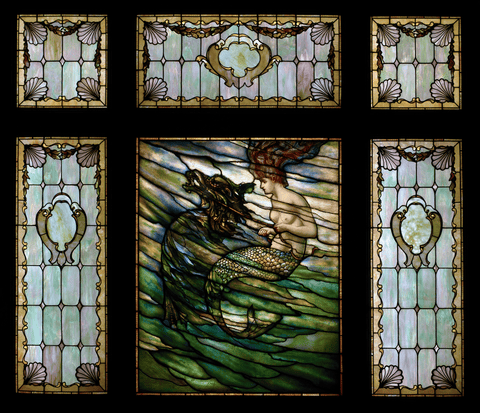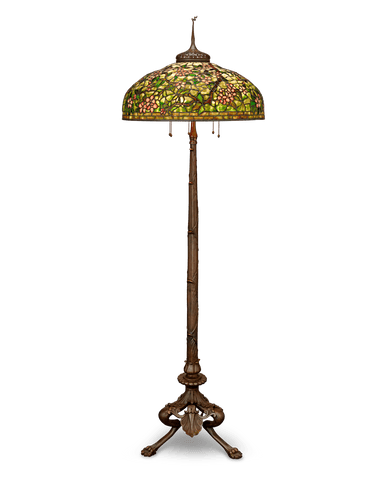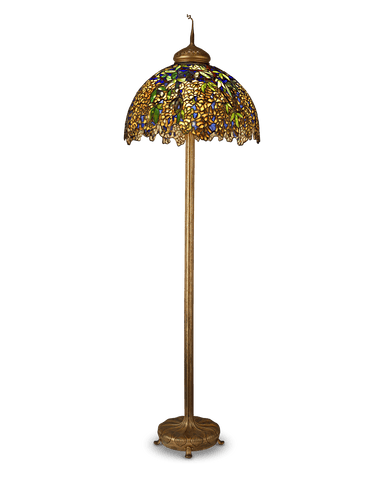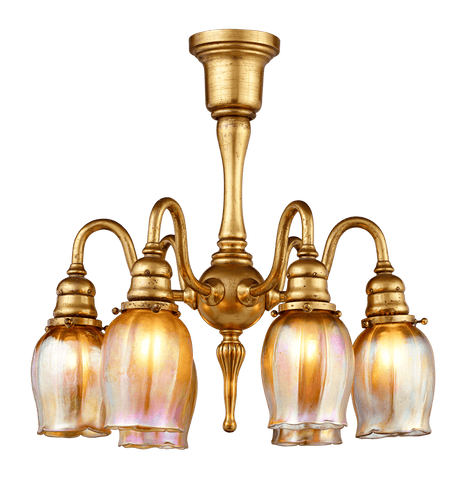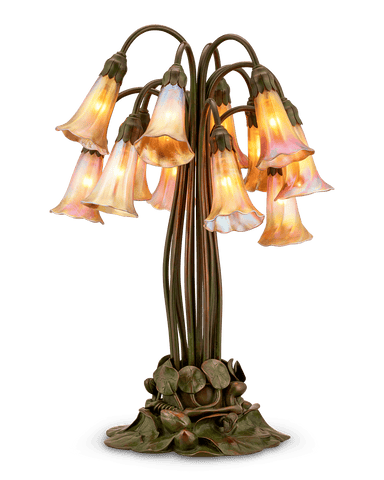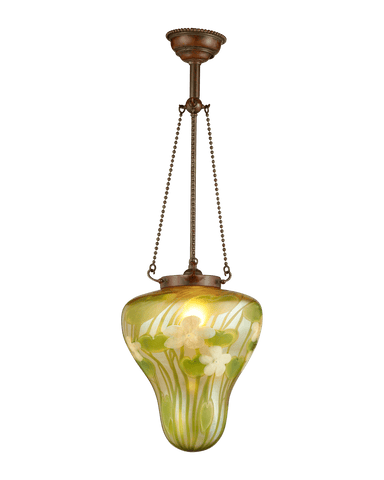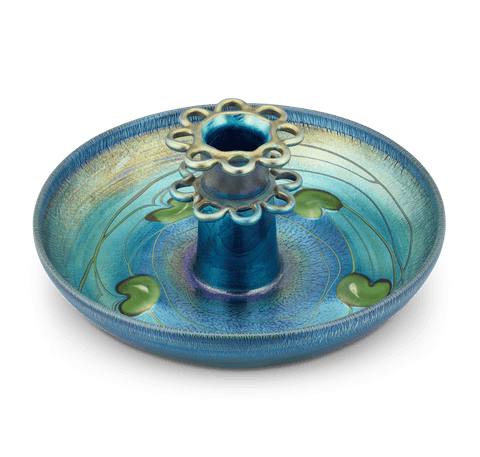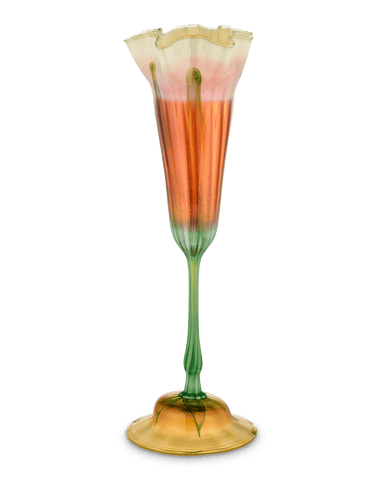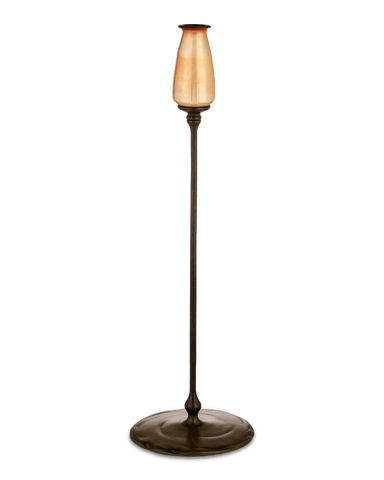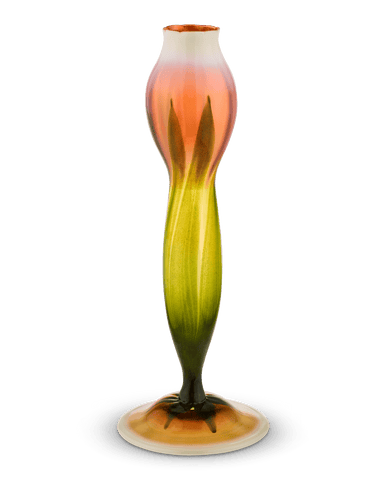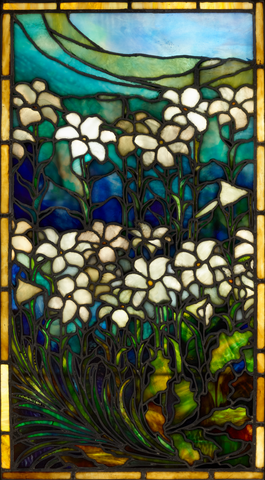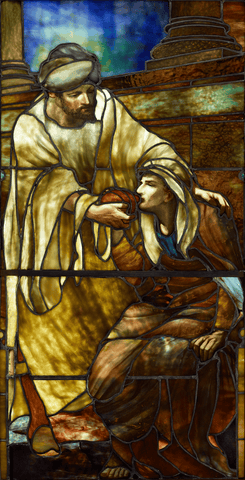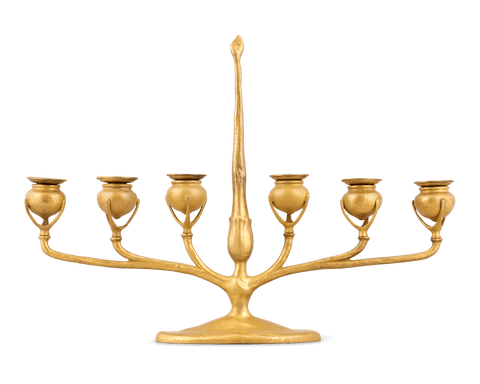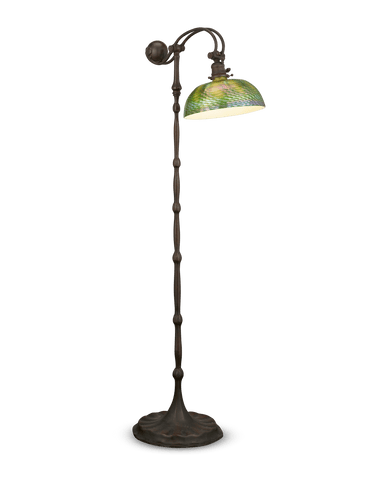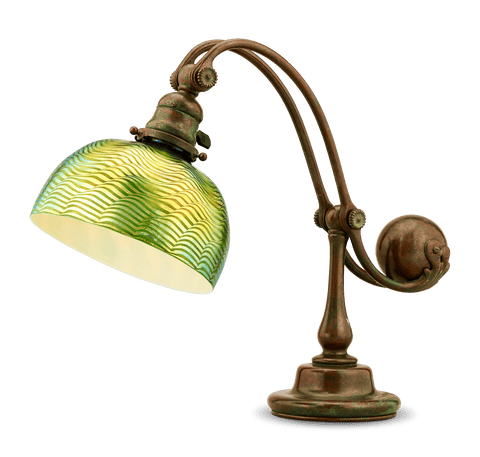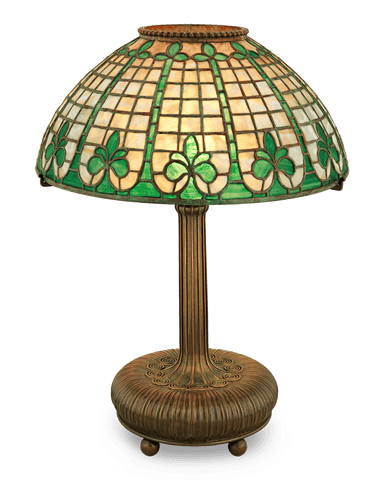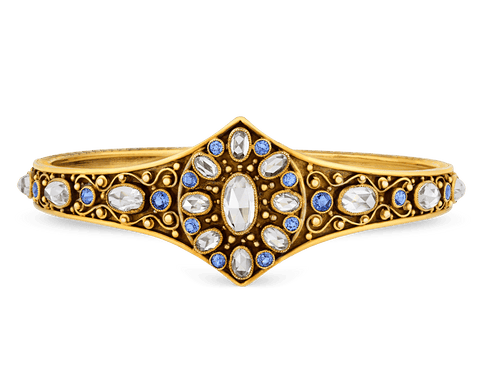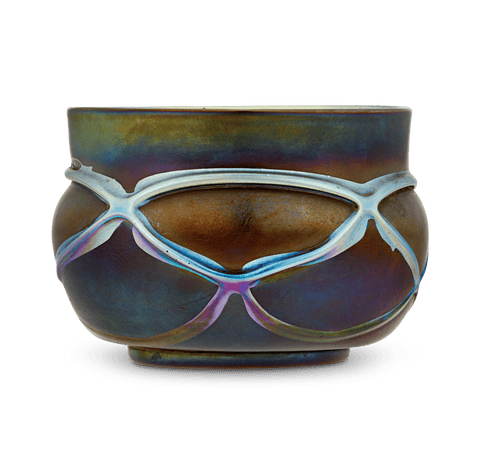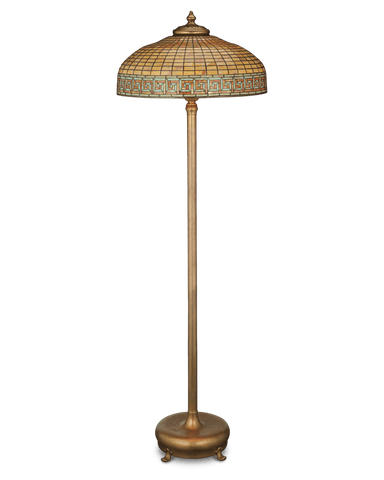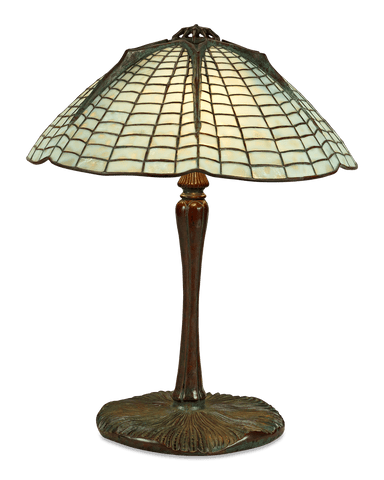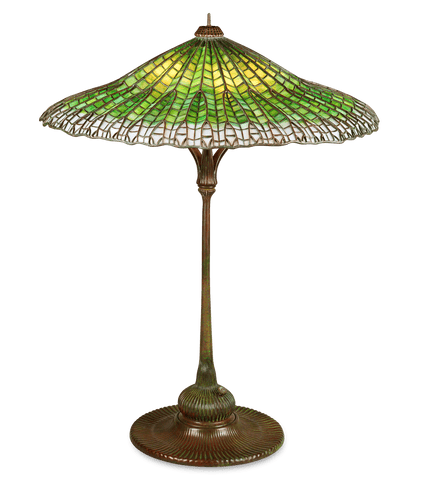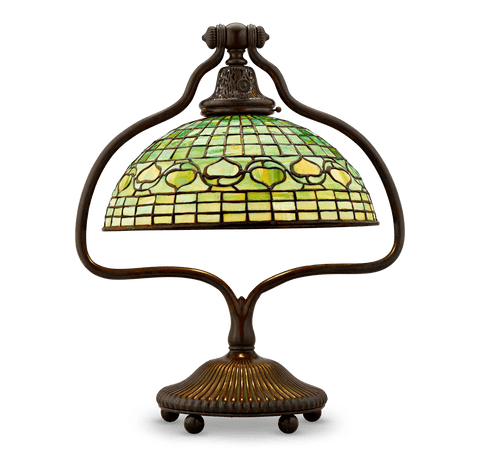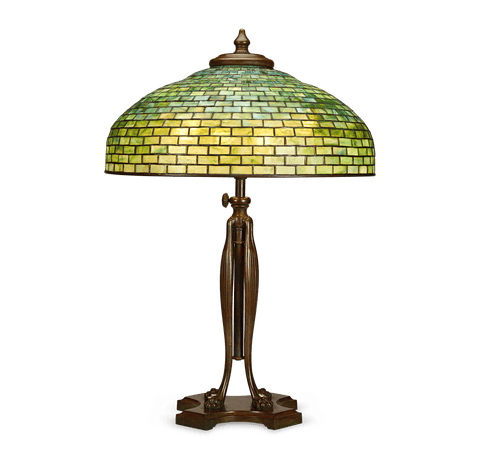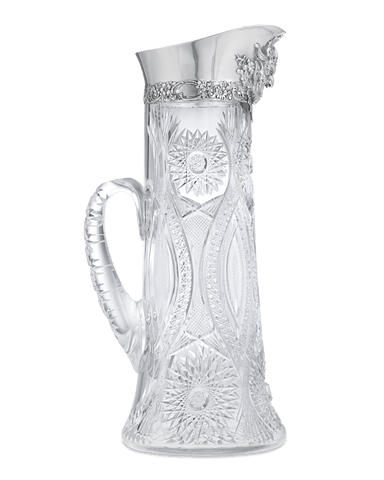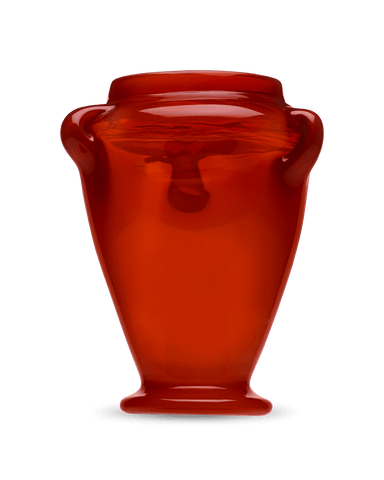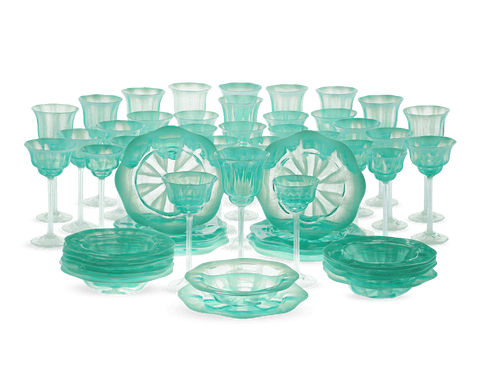Artists & Artisans
Tiffany, Louis Comfort
1848-1933
Louis Comfort Tiffany was one of the most important and prolific American artists who transformed the decorative arts landscape of the 19th and 20th centuries. His discerning eye and innovative genius extended into realms far beyond the famed glassworks for which he is most renowned, including mosaics, pottery, metalwork, jewelry and interiors. Describing his life’s work simply as a “quest for beauty,” Tiffany endlessly pursued new forms, techniques and ideas that would define the Art Nouveau aesthetic and influence generations of artists and makers to come.
Early Life
The son of Charles Lewis Tiffany, founder of the prestigious Tiffany & Co., Louis decided from an early age to chart his own artistic path, rather than join the family business. He trained first as a painter and traveled widely across Europe and North Africa, even exhibiting his work to much acclaim at the 1876 Centennial Exposition in Philadelphia. By the late 1870s, Tiffany had more firmly moved into the realm of decorative arts and interior design, though he continued to paint throughout his life.
Tiffany launched his own decorating business, Louis C. Tiffany & Associated Artists, in 1878, receiving commissions from elite American clientele, including the Seventh Regiment Armory, Madison Square Theatre and the Union League Club. A serious collector of European, Moorish and Oriental furnishings, Tiffany designed furnishings with a distinct Arts and Crafts feel. Designing each piece to match the feel of the room in which it belonged, Tiffany's aesthetic was a direct reaction to the mass-produced furniture that was beginning to flood the market in the late 19th century.
Tiffany Studios
Though Tiffany first started his experiments with stained glass in 1875, it was not until 10 years later that he opened Tiffany Glass Company, which was later changed to Tiffany Studios in 1900. By that time, he was already the leading art glass producer in the country, serving wealthy New Yorkers and commissioning massive windows for Mark Twain, Cornelius Vanderbilt and even the White House. Due to Tiffany's ability to create incredible details solely using the qualities of his unique glass, a technique displayed in this striking Tiffany Figural Window, these masterpieces soon became known as "paintings in glass."
The success of Tiffany Studios likely would not have happened without Tiffany's 1881 discovery of what he termed 'Favrile' glass, derived from an Old English word meaning handcrafted. The Favrile technique produced glass that is iridescent and freely shaped, which he then combined with bronze and other metals to get the desired translucency. The exquisitely dichroic combination of his distinctive Favrile glass and the matchless vibrancy of his stained glass gives Tiffany's legendary lamps, in particular, an unrivaled beauty. Timeless and true to the essence of nature, Tiffany himself stated that his lamps allowed people to enjoy the elements of nature all year long.
Legacy
After his widespread success in leaded glass and Favrile, Tiffany expanded into mosaic, enamelwork and pottery. Upon his father’s death in 1902, Tiffany was appointed the first Design Director of Tiffany & Co, and his unconventional, nature-inspired designs became hugely popular and widely acclaimed. At the height of his career, between 1902 and 1905, Tiffany built an 84-room estate called Laurelton Hall on Long Island—a work of art that was the ultimate, integrated expression of this master’s visionary aesthetic.At the time of Tiffany's death in 1933, the floral opulence of Art Nouveau has given way to the sleek styling of Art Deco. Now, the beauty, rarity and uniqueness of Louis Comfort Tiffany and Tiffany Studios are honored and treasured throughout the world, confirming Tiffany's legacy as the preeminent luminary of the Art Nouveau movement.
Artists & Artisans
Tiffany, Louis Comfort
1848-1933
Louis Comfort Tiffany was one of the most important and prolific American artists who transformed the decorative arts landscape of the 19th and 20th centuries. His discerning eye and innovative genius extended into realms far beyond the famed glassworks for which he is most renowned, including mosaics, pottery, metalwork, jewelry and interiors. Describing his life’s work simply as a “quest for beauty,” Tiffany endlessly pursued new forms, techniques and ideas that would define the Art Nouveau aesthetic and influence generations of artists and makers to come.
Early Life
The son of Charles Lewis Tiffany, founder of the prestigious Tiffany & Co., Louis decided from an early age to chart his own artistic path, rather than join the family business. He trained first as a painter and traveled widely across Europe and North Africa, even exhibiting his work to much acclaim at the 1876 Centennial Exposition in Philadelphia. By the late 1870s, Tiffany had more firmly moved into the realm of decorative arts and interior design, though he continued to paint throughout his life.
Tiffany launched his own decorating business, Louis C. Tiffany & Associated Artists, in 1878, receiving commissions from elite American clientele, including the Seventh Regiment Armory, Madison Square Theatre and the Union League Club. A serious collector of European, Moorish and Oriental furnishings, Tiffany designed furnishings with a distinct Arts and Crafts feel. Designing each piece to match the feel of the room in which it belonged, Tiffany's aesthetic was a direct reaction to the mass-produced furniture that was beginning to flood the market in the late 19th century.
Tiffany Studios
Though Tiffany first started his experiments with stained glass in 1875, it was not until 10 years later that he opened Tiffany Glass Company, which was later changed to Tiffany Studios in 1900. By that time, he was already the leading art glass producer in the country, serving wealthy New Yorkers and commissioning massive windows for Mark Twain, Cornelius Vanderbilt and even the White House. Due to Tiffany's ability to create incredible details solely using the qualities of his unique glass, a technique displayed in this striking Tiffany Figural Window, these masterpieces soon became known as "paintings in glass."
The success of Tiffany Studios likely would not have happened without Tiffany's 1881 discovery of what he termed 'Favrile' glass, derived from an Old English word meaning handcrafted. The Favrile technique produced glass that is iridescent and freely shaped, which he then combined with bronze and other metals to get the desired translucency. The exquisitely dichroic combination of his distinctive Favrile glass and the matchless vibrancy of his stained glass gives Tiffany's legendary lamps, in particular, an unrivaled beauty. Timeless and true to the essence of nature, Tiffany himself stated that his lamps allowed people to enjoy the elements of nature all year long.
Legacy
After his widespread success in leaded glass and Favrile, Tiffany expanded into mosaic, enamelwork and pottery. Upon his father’s death in 1902, Tiffany was appointed the first Design Director of Tiffany & Co, and his unconventional, nature-inspired designs became hugely popular and widely acclaimed. At the height of his career, between 1902 and 1905, Tiffany built an 84-room estate called Laurelton Hall on Long Island—a work of art that was the ultimate, integrated expression of this master’s visionary aesthetic.At the time of Tiffany's death in 1933, the floral opulence of Art Nouveau has given way to the sleek styling of Art Deco. Now, the beauty, rarity and uniqueness of Louis Comfort Tiffany and Tiffany Studios are honored and treasured throughout the world, confirming Tiffany's legacy as the preeminent luminary of the Art Nouveau movement.



